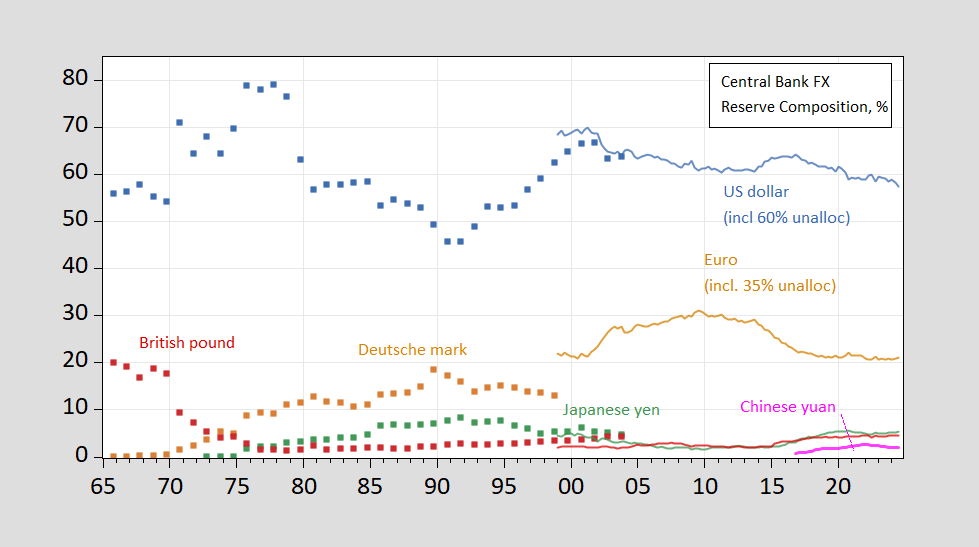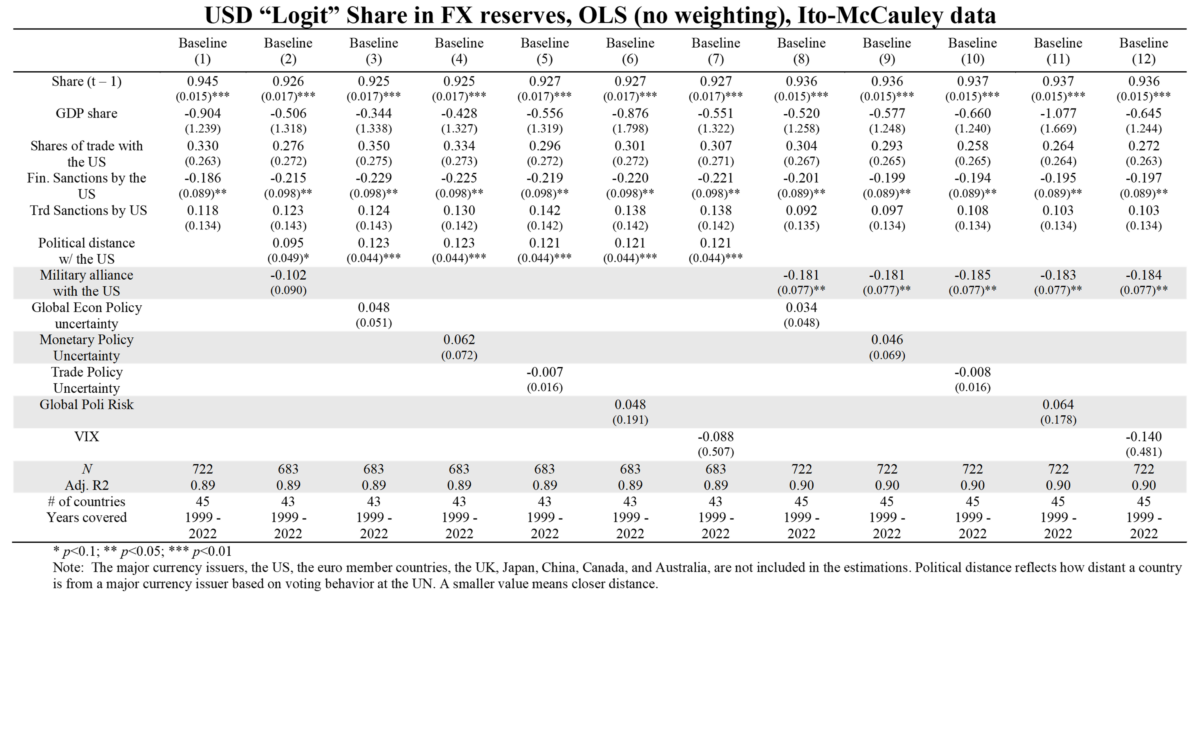Dollar Dominance No More?
Steve Kamin in the FT, Goodman in the NYT, Krugman on substack, FT Editorial Board write on how Trump policy erraticism on erosion of the dollar as a safe asset/exorbitant privilege. Kamin deploys regressions to support his conclusions:
In the wake of President Trump’s initial salvo of broad-based tariffs, on 2 April, stock prices plunged, volatility as measured by the VIX index soared, and Treasury yields shot up substantially.
Ordinarily, these developments would be expected to buoy the value of the dollar, which is a “flight-to-safety” currency sought out by investors during times of crisis and acute uncertainty. Instead, the value of the dollar, too, plunged. In fact — relative to the predictions of a simple econometric model — the dollar fell by the greatest margin in the past four years.
The anomalous behavior of the dollar (DXY index) is shown below:

The dollar index should have surged with the VIX. It declined instead. (It also declined with EPU, prompting me to admit in lecture yesterday I was wrong in my prediction of dollar appreciation in the wake of the Trump Tariff-Tantrum.
Do we know how central banks have changed their holdings? Not for a period encompassing Trump 2.0 and post-Liberation Day events. COFER data extends up to end-2024.

Figure 1: Share of foreign exchange reserves held by central banks, in USD (blue), EUR (orange), DEM(tan squares), JPY (green), GBP (sky blue), Swiss francs (purple), CNY (red). For 1999 data onward, estimates based on COFER data, and apportionment of unallocated reserves, described in text.Source: Chinn and Frankel (2007), IMF COFER accessed April 2025, and author’s estimates.
End-Q1 data will be released on June 30, 2025.
As for individual central bank holdings, which central banks are not required to publish, we only have voluntarily provided data through 2022 or 2023. Analysis of the determinants through 2022 is recounted here.
Results from regressions of logit transform of USD shares on various determinants of individual central bank holdings.
(Click on image to enlarge)

Source: Chinn, Frankel, Ito, “Geopolitical Risks and Central Bank Reserve Holdings,” presentation at “Global Shocks, Macroeconomic Spillovers and Geopolitical Risks: Policy Challenges” (ECFIN, Brussels, 7-8 April, 2025.
We won’t get a substantial number of results for 2025 for quite a while, so we’ll have to look elsewhere for evidence on central bank holdings.
More By This Author:
2025Q1 Stall Speed? Tracking And Betting On GDP Growth, Retail Sales Composition
WSJ Survey Of Economists – April 2025
Expectations Continue To Fall Off A Cliff



